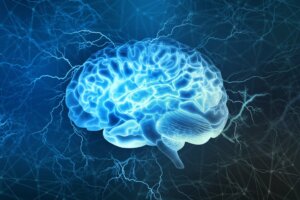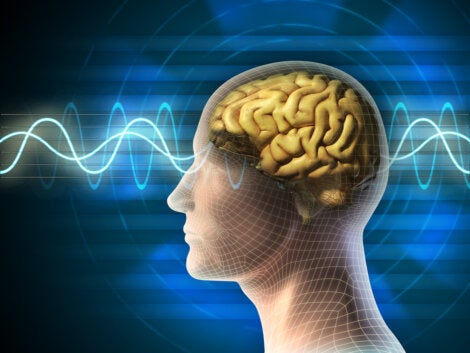Sleep Cycles: Understanding Your Brain Can Help You Sleep Better


Written and verified by the psychologist Valeria Sabater
REM cycles, non-REM cycles, delta waves, theta waves, K-complexes… The sleep cycles are as fascinating as they are important to human life. As Friedrich Nietzsche said, “Sleeping is no mean art: for its sake, one must stay awake all day”. In addition, when you finally manage to fall asleep, your mind gives you what already belongs to you: your dreams.
However, as you probably well know, in the last few decades, we’ve become an almost sleepless society. Nearly 40% of the population has sleep disorders and 90% have trouble getting restorative sleep at least once a year. Our lifestyle, stress, and certain habits, such as the intense use of technology, affect our sleep hygiene.
As a result, it’s very interesting to understand what happens in the brain while we sleep. After all, during those hours, the brain’s only purpose is to facilitate deep sleep. In the end, nighttime is when the body carries out the tasks that are essential for your well-being. To maintain good physical and psychological health, you need to get good sleep to solidify memories, eliminate toxins, and eliminate irrelevant data and information.
Let’s delve a little deeper into the world of sleep cycles.

The five stages: sleep cycles for a good night’s sleep
Each sleep cycle lasts approximately 90 minutes. Consequently, you go through about five or six cycles every night. As you might know, waking up in the middle of one of those cycles without reaching REM sleep means you’ll wake up tired, confused, and lethargic.
Ideally, you should stay asleep for the entirety of the five phases. At a minimum, your body needs to stay asleep long enough for the cycle to repeat four times. Sleeping less than five hours doesn’t give the brain enough time to do all of the necessary processes and “restart” itself.
Let’s take a detailed look at each sleep cycle.
Stage 1: light sleep
This first stage is when you’re already feeling relaxed and comfortable in bed. It lasts about fifteen or twenty minutes. Stage 1 is the tenuous threshold between wakefulness and sleep. If you do an electroencephalogram (EEG) on someone in the light sleep stage, their brain will display theta waves (3, 5-7, 5 Hz).
Stage 2: light sleep, heart rate begins to slow
Here, your breathing starts to slow down, your heart rate drops, and your brain waves slow down. The only difference between stage 2 and stage 1 is that, in stage 2, the K-waves or sleep spindles (sudden increases in brain wave frequencies) increase. These frequencies tend to go between 12 and 14 Hz, which is very slow. The purpose of these sleep spindles is to keep you from waking up.
Likewise, it’s very common during this stage to experience something that you’re probably very familiar with. We’re talking about dreaming that you’re falling. Scientists believe that you get this feeling as a result of your low heart rates.
The brain needs to make sure that everything is okay and that everything is under control. Therefore, it sends a sudden stimulus that your mind interprets in the same way it would if you were falling.
Stage 3: transition
You might say that this is the halfway point of your sleep cycle. This is a short stage; it only lasts five minutes. During that time, the theta waves, slow waves, get shorter and become delta waves, which are more intense. People who sleepwalk often do it during this point in the sleep cycle.

Stage 4: deep Sleep
You’ve come to the deepest stage of sleep, which lasts about 20 to 30 minutes. When your brain is in this stage, it’s very difficult to wake up. The delta waves have taken over completely at this point, and your sleep is truly restorative, in every sense of the word.
If you wake up during this stage, you’ll feel groggy, disoriented, and foggy. People with insomnia experience this very often. In general, they don’t reach the fourth stage.
The REM cycle: the dream and nightmare stage
This is the most important and most interesting sleep cycle. Most people are aware that dreams and nightmares happen during the REM cycle. In addition, during this stage, the theta waves take over again. Consequently, on an EEG, you’ll see the same brain activity that’s present when you’re awake. That’s due to the fact that the brain is extremely active during this sleep stage.
The REM cycle is also known as paradoxical sleep. It makes up about 25% of your sleep cycle. The prior stages, called non-REM cycles, or slow sleep cycles, make up the rest. Thus, the entire structure of nighttime rest (in normal conditions) is carried out in a process that lasts about 90 minutes.
We emphasize “normal conditions” because if you take medication to treat a sleep disorder, it can slightly alter this cycle. Chemical substances can change the flow of stages and brain waves.
Ideally, you should be able to get good sleep without the use of pharmaceuticals. Instead, try some natural strategies first, such as managing stress, being mindful of your schedule, and watching what you eat. Limiting your exposure to the blue light from screens is also important. Even simple things such as the temperature in your room can affect your sleep.
Sleeping well means living well. Understanding the sleep cycles and setting yourself up for a night of deep, restorative sleep will help you feel better every day.
REM cycles, non-REM cycles, delta waves, theta waves, K-complexes… The sleep cycles are as fascinating as they are important to human life. As Friedrich Nietzsche said, “Sleeping is no mean art: for its sake, one must stay awake all day”. In addition, when you finally manage to fall asleep, your mind gives you what already belongs to you: your dreams.
However, as you probably well know, in the last few decades, we’ve become an almost sleepless society. Nearly 40% of the population has sleep disorders and 90% have trouble getting restorative sleep at least once a year. Our lifestyle, stress, and certain habits, such as the intense use of technology, affect our sleep hygiene.
As a result, it’s very interesting to understand what happens in the brain while we sleep. After all, during those hours, the brain’s only purpose is to facilitate deep sleep. In the end, nighttime is when the body carries out the tasks that are essential for your well-being. To maintain good physical and psychological health, you need to get good sleep to solidify memories, eliminate toxins, and eliminate irrelevant data and information.
Let’s delve a little deeper into the world of sleep cycles.

The five stages: sleep cycles for a good night’s sleep
Each sleep cycle lasts approximately 90 minutes. Consequently, you go through about five or six cycles every night. As you might know, waking up in the middle of one of those cycles without reaching REM sleep means you’ll wake up tired, confused, and lethargic.
Ideally, you should stay asleep for the entirety of the five phases. At a minimum, your body needs to stay asleep long enough for the cycle to repeat four times. Sleeping less than five hours doesn’t give the brain enough time to do all of the necessary processes and “restart” itself.
Let’s take a detailed look at each sleep cycle.
Stage 1: light sleep
This first stage is when you’re already feeling relaxed and comfortable in bed. It lasts about fifteen or twenty minutes. Stage 1 is the tenuous threshold between wakefulness and sleep. If you do an electroencephalogram (EEG) on someone in the light sleep stage, their brain will display theta waves (3, 5-7, 5 Hz).
Stage 2: light sleep, heart rate begins to slow
Here, your breathing starts to slow down, your heart rate drops, and your brain waves slow down. The only difference between stage 2 and stage 1 is that, in stage 2, the K-waves or sleep spindles (sudden increases in brain wave frequencies) increase. These frequencies tend to go between 12 and 14 Hz, which is very slow. The purpose of these sleep spindles is to keep you from waking up.
Likewise, it’s very common during this stage to experience something that you’re probably very familiar with. We’re talking about dreaming that you’re falling. Scientists believe that you get this feeling as a result of your low heart rates.
The brain needs to make sure that everything is okay and that everything is under control. Therefore, it sends a sudden stimulus that your mind interprets in the same way it would if you were falling.
Stage 3: transition
You might say that this is the halfway point of your sleep cycle. This is a short stage; it only lasts five minutes. During that time, the theta waves, slow waves, get shorter and become delta waves, which are more intense. People who sleepwalk often do it during this point in the sleep cycle.

Stage 4: deep Sleep
You’ve come to the deepest stage of sleep, which lasts about 20 to 30 minutes. When your brain is in this stage, it’s very difficult to wake up. The delta waves have taken over completely at this point, and your sleep is truly restorative, in every sense of the word.
If you wake up during this stage, you’ll feel groggy, disoriented, and foggy. People with insomnia experience this very often. In general, they don’t reach the fourth stage.
The REM cycle: the dream and nightmare stage
This is the most important and most interesting sleep cycle. Most people are aware that dreams and nightmares happen during the REM cycle. In addition, during this stage, the theta waves take over again. Consequently, on an EEG, you’ll see the same brain activity that’s present when you’re awake. That’s due to the fact that the brain is extremely active during this sleep stage.
The REM cycle is also known as paradoxical sleep. It makes up about 25% of your sleep cycle. The prior stages, called non-REM cycles, or slow sleep cycles, make up the rest. Thus, the entire structure of nighttime rest (in normal conditions) is carried out in a process that lasts about 90 minutes.
We emphasize “normal conditions” because if you take medication to treat a sleep disorder, it can slightly alter this cycle. Chemical substances can change the flow of stages and brain waves.
Ideally, you should be able to get good sleep without the use of pharmaceuticals. Instead, try some natural strategies first, such as managing stress, being mindful of your schedule, and watching what you eat. Limiting your exposure to the blue light from screens is also important. Even simple things such as the temperature in your room can affect your sleep.
Sleeping well means living well. Understanding the sleep cycles and setting yourself up for a night of deep, restorative sleep will help you feel better every day.
This text is provided for informational purposes only and does not replace consultation with a professional. If in doubt, consult your specialist.







